Hoi-Jun Yoo
A 23 $μ$W Keyword Spotting IC with Ring-Oscillator-Based Time-Domain Feature Extraction
Aug 01, 2022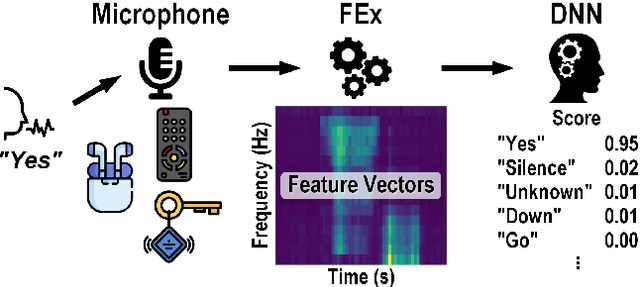
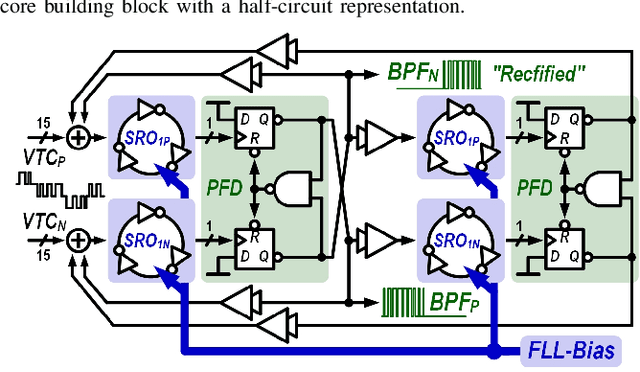

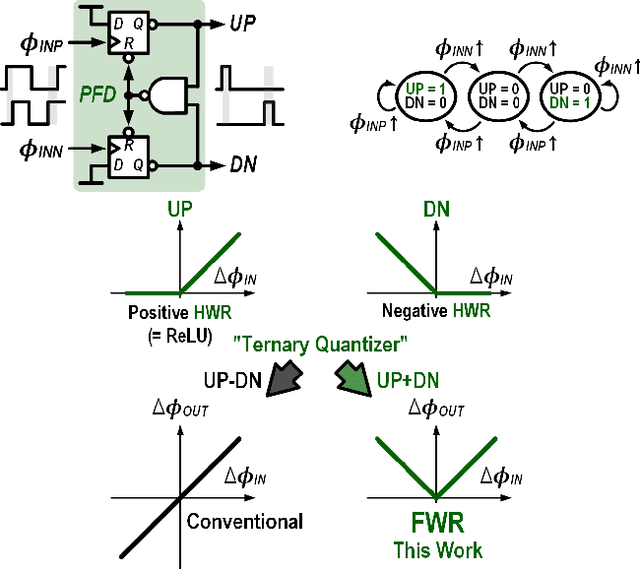
Abstract:This article presents the first keyword spotting (KWS) IC which uses a ring-oscillator-based time-domain processing technique for its analog feature extractor (FEx). Its extensive usage of time-encoding schemes allows the analog audio signal to be processed in a fully time-domain manner except for the voltage-to-time conversion stage of the analog front-end. Benefiting from fundamental building blocks based on digital logic gates, it offers a better technology scalability compared to conventional voltage-domain designs. Fabricated in a 65 nm CMOS process, the prototyped KWS IC occupies 2.03mm$^{2}$ and dissipates 23 $\mu$W power consumption including analog FEx and digital neural network classifier. The 16-channel time-domain FEx achieves 54.89 dB dynamic range for 16 ms frame shift size while consuming 9.3 $\mu$W. The measurement result verifies that the proposed IC performs a 12-class KWS task on the Google Speech Command Dataset (GSCD) with >86% accuracy and 12.4 ms latency.
Energy-efficient Dense DNN Acceleration with Signed Bit-slice Architecture
Mar 15, 2022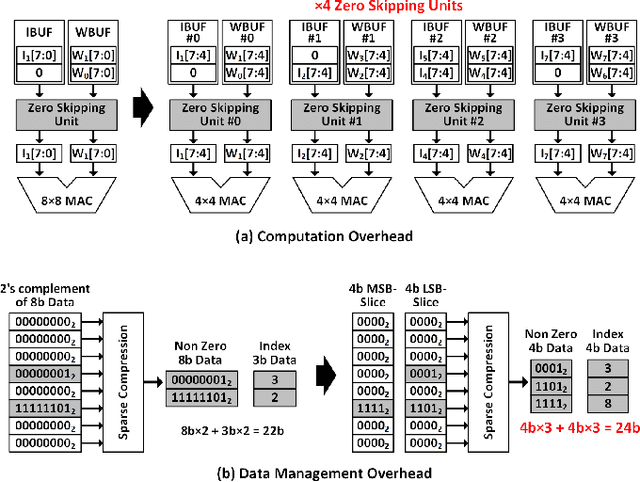
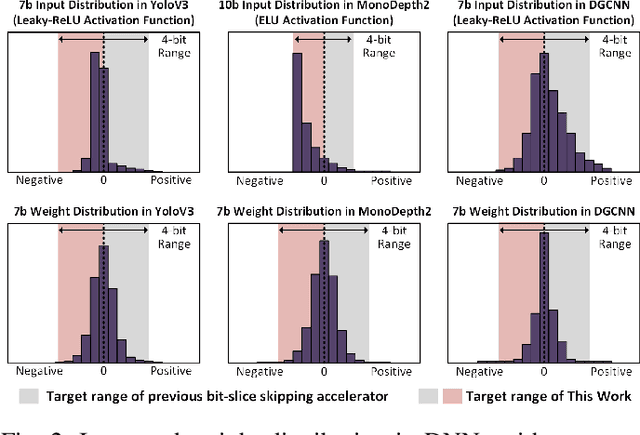
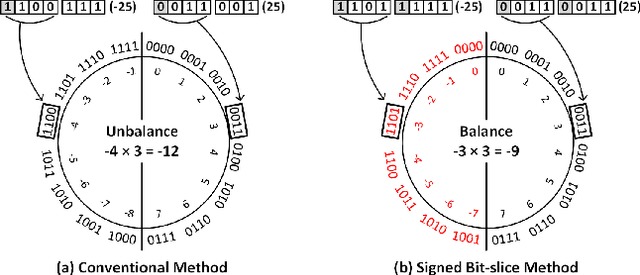
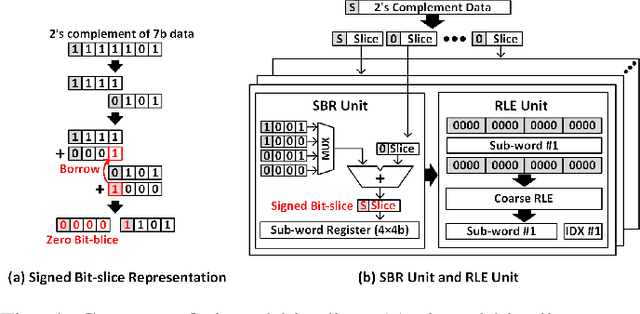
Abstract:As the number of deep neural networks (DNNs) to be executed on a mobile system-on-chip (SoC) increases, the mobile SoC suffers from the real-time DNN acceleration within its limited hardware resources and power budget. Although the previous mobile neural processing units (NPUs) take advantage of low-bit computing and exploitation of the sparsity, it is incapable of accelerating high-precision and dense DNNs. This paper proposes energy-efficient signed bit-slice architecture which accelerates both high-precision and dense DNNs by exploiting a large number of zero values of signed bit-slices. Proposed signed bit-slice representation (SBR) changes signed $1111_{2}$ bit-slice to $0000_{2}$ by borrowing a $1$ value from its lower order of bit-slice. As a result, it generates a large number of zero bit-slices even in dense DNNs. Moreover, it balances the positive and negative values of 2's complement data, allowing bit-slice based output speculation which pre-computes high order of bit-slices and skips the remaining dense low order of bit-slices. The signed bit-slice architecture compresses and skips the zero input signed bit-slices, and the zero skipping unit also supports the output skipping by masking the speculated inputs as zero. Additionally, the heterogeneous network-on-chip (NoC) benefits the exploitation of data reusability and reduction of transmission bandwidth. The paper introduces a specialized instruction set architecture (ISA) and a hierarchical instruction decoder for the control of the signed bit-slice architecture. Finally, the signed bit-slice architecture outperforms the previous bit-slice accelerator, Bit-fusion, over $\times3.65$ higher area-efficiency, $\times3.88$ higher energy-efficiency, and $\times5.35$ higher throughput.
GST: Group-Sparse Training for Accelerating Deep Reinforcement Learning
Jan 24, 2021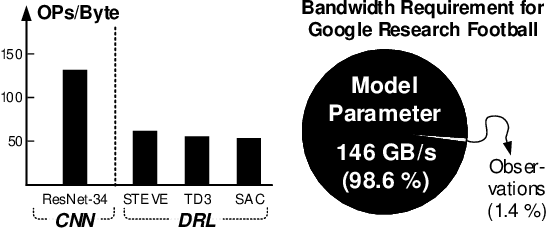
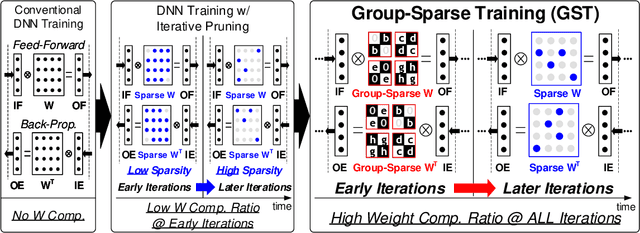
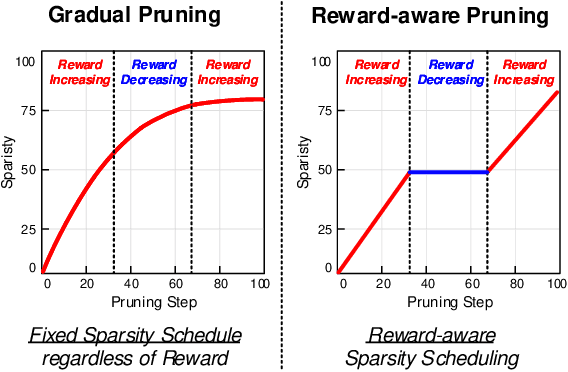
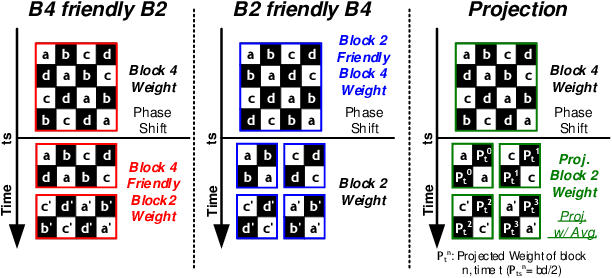
Abstract:Deep reinforcement learning (DRL) has shown remarkable success in sequential decision-making problems but suffers from a long training time to obtain such good performance. Many parallel and distributed DRL training approaches have been proposed to solve this problem, but it is difficult to utilize them on resource-limited devices. In order to accelerate DRL in real-world edge devices, memory bandwidth bottlenecks due to large weight transactions have to be resolved. However, previous iterative pruning not only shows a low compression ratio at the beginning of training but also makes DRL training unstable. To overcome these shortcomings, we propose a novel weight compression method for DRL training acceleration, named group-sparse training (GST). GST selectively utilizes block-circulant compression to maintain a high weight compression ratio during all iterations of DRL training and dynamically adapt target sparsity through reward-aware pruning for stable training. Thanks to the features, GST achieves a 25 \%p $\sim$ 41.5 \%p higher average compression ratio than the iterative pruning method without reward drop in Mujoco Halfcheetah-v2 and Mujoco humanoid-v2 environment with TD3 training.
 Add to Chrome
Add to Chrome Add to Firefox
Add to Firefox Add to Edge
Add to Edge